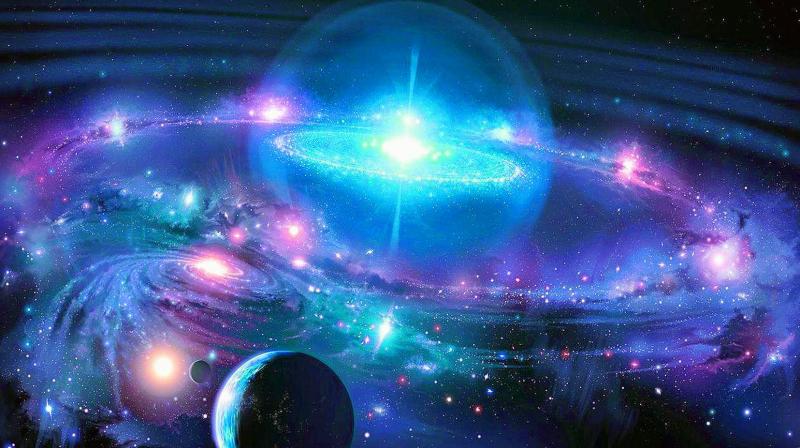Avyakta revisits Big Bang on creation of Universe
An ambitious, even audacious, effort to propose a new physical model for the universe.

Kochi: It is no fiction but a serious attempt to redefine the fundamental principles governing the universe. An ambitious, even audacious, effort to propose a new physical model for the universe. Writer C. Radhakrishnan has presented a new theory which takes a cue from the Vedantic concept of Avyakta as the all-pervading medium.
Kerala Science and Technology Society (KSTS) on Wednesday showcased the hypothesis, which he published in Prespacetime Journal in the US in December, at a press conference here. “Avyakta is the sole basis for the universe,” says a concept note on the theory he developed over five decades of research.
“The universe is born of it and dissolves back into it. It can contract, expand or remain neutral. Particles of matter are spiral whirls and swirls of it, in it, part of it and move in it like whirls in water.”
Taking inspiration from Gita, Mr Radhakrishnan, who had graduated in physics and worked at the Astrophysical Observatory, Kodaikanal, and at World-Wide Seismology Centre, Pune, has used the methods and terminology of modern science to develop a full-fledged theory that aims at explaining how matter, space and time come into being, exist and exit, how the universe is born, sustained and is going to end and how the physical forces are related to each other. “The more removed Avyakta is from its neutral state, the greater its tendency to retract or the more ‘vigorous’ it is,” goes the theory, introducing another basic concept called vigour.
“Forces are expressions of this vigour. Strong nuclear force represents the sharpest gradient of vigour…All forces are therefore basically the same.” “Matter in its solid-liquid-gaseous states, the fabric of space and all forms of exchange of vigour from one point in space to another are the basic building blocks of the physical universe.”
The idea began to take shape in Radhakrishnan’s mind after he wondered how solar radiation travels through such long distances presumably through empty space. Another concept that puzzled him is that an electric vector is supposed to produce a magnetic vector at a certain distance while a magnetic vector, in turn, produces an electric vector. “When an overhead tank is full, the tap below should run continuously, but no radiation source runs continuously. It emits, stops and again emits,” he says.
He concluded that only an all-pervading medium that supports and sustains all such physical phenomena could be the real one and he called it Avyakta.
The universe didn’t begin with any big explosion, if you believe him, but started with the fabric of space being born, spirally uncoiling all of a sudden. Time, too, is a product of the vigour of the fabric of space. He says the new theory will not negate any of the existing ones, but will help solve some of the riddles haunting physics and remove some of the roadblocks. Playing a key role in the research and its culmination has been his son Dr K.R. Gopal who co-authored Avyakta: The Fabric of Space. Dr Madan Thangavelu of Cambridge University has also contributed.
Prespacetime Journal describes itself as a publication in which physicists, mathematicians and other learned scholars publish their research results and express their views on the origin, nature and mechanism of spacetime and its possible connection to a prespacetime.
The new model
The existing concept of the birth of the universe is that it came into being as a result of a primordial explosion, the condensed core-shattering into smithereens, which later reassembled, accreted and evolved into galaxies. The space in between had no part to play in the drama.
The galaxies that formed in this fashion still recede with the impetus impacted by the explosion. According to the Radhakrishnan-Gopal model, which is also being called the Unity model, as it envisages unification of physical forces, the universe began when super condensed Avyakta went into expansion phase of its spiral oscillation. Fundamental particles were formed as whirls and swirls in this process. Space, matter, time and forces are products of changes of the vigour of Avyakta. Now, the difference essentially is this: In no part of the universe, the vigour of Avyakta remains the same for any duration of time.
So there are no invariants possible unless the vigour is assumed to remain the same.
All existing physical theories are, therefore, ‘special’ cases of the general rule, true only with the assumptions granted.

